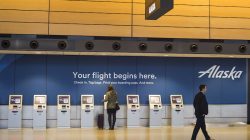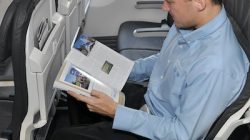Back in March, the state of Alaska moved aggressively to insulate the state from the coronavirus pandemic. It issued a mandatory 14-day quarantine for ALL nonresident visitors, regardless of the reason for travel. Well, for those hoping to visit this summer, some good news arrived last week. Alaska announced the end of the quarantine requirement effective June 5th – with a notable catch. The state becomes the first to require a negative COVID-19 test to avoid the quarantine.
Post has been updated to reflect revised entry restrictions effective August 11, 2020.
Testing Requirements to Enter Alaska
Per the guidelines released so far, the state plans to enforce the new rules at airports receiving out-of-state flights. Currently, this applies to airports at Anchorage, Fairbanks, Juneau, Sitka, Ketchikan, and Wrangell/Petersburg. The state plans to offer the following options for visitors, per the updated Health Mandate 10:
- Provide a negative test result taken a maximum of 72 hours before departure to Alaska;
- Provide proof of a test taken within 72 hours of departure and self-quarantine until results are received;
- Take a test upon arrival at the airport at a cost of $250 and quarantine until results are received
Travelers who test before departure are encouraged to “minimize interactions with Alaskans” until the sooner of:
- Receipt of negative results from a second test;
- 14 days after arrival in Alaska;
- Your departure from Alaska
Effective August 11th, the previous options to test 5 days prior to arrival or self-quarantine for 14 days are unavailable to nonresidents.
One caveat: individual cities may continue to require nonresidents to quarantine, regardless of testing. Juneau is reportedly considering one, and Anchorage has floated the idea previously.

The Pitfalls of Mandatory Testing
On the one hand, a testing requirement provides the best level of assurance that you aren’t infected before entering. In general, I like the concept as a way to open areas up to travel while mitigating the risks. However, before you decide to plan an Alaska summer vacation, there are some things to keep in mind.
First, remember that test results are only valid up to 72 hours before your flight. And if you test positive, you’re SOL. Yes, at least you find out at home, and can address your self-isolation there. But, 3 days also means most of your lodging/tour costs are now fully nonrefundable. There’s also the possibility of getting exposed between the test and arrival.
But I also suggest treading very, very carefully if you want to test on arrival. Depending on the state you live in, this might be your only option; some states/localities require evidence of symptoms or a doctor’s order first. However, what happens if you test positive at the airport? Most likely, you’re stuck in your arrival city for the next 14 days. (The state also indicated they may suspend testing on arrival if capacity becomes an issue later.)
Does travel insurance cover cancellation costs in either case? If you test positive before leaving and cancel a trip, at least some policies cover this under regular medical benefits. Likewise, if you get sick mid-trip and test positive, medical coverage probably takes care of that, too. But I’m not so sure about a positive test on arrival. I can see an insurance company giving you problems with that claim. Bear in mind also that should the situation deteriorate later to the point that Alaska reinstitutes a visitor ban, travel insurance does NOT cover cancellation costs, unless you have a “cancel for any reason” policy. Ditto if your state enacts a quarantine for travelers from Alaska, or a transit point for a connecting flight.
Alaska Hotels Have Been Quite Accommodating
We originally planned a 10-ish day trip to Alaska leaving on the 17th. Because of limited services in Denali National Park in June, we decided to postpone until early August. Our plan involved two longer stays, with four nights outside Denali, and three in Coldfoot, about halfway between Fairbanks and the Arctic Ocean. Both were technically within the penalty period for changes, but both were willing to work with us.
The Denali Grizzly Bear Resort moved our dates to August without penalty. Meanwhile, the Boreal Lodge outside Coldfoot offered a choice of either moving to a different date, or allowing a “do over” in 2021. If you have an Alaska trip on the books this summer but want to cancel, contact your hotel(s) to see if they’ll offer you something. Given all the cancellations, they might at least offer to move your deposit to next year.
A Potential Unique Opportunity for Visitors Willing to Brave It
For those willing to take a chance on a trip, a unique opportunity potentially awaits. Typically, Denali National Park only allows private vehicles to drive the first 15 miles of the park road. Normally, park visitors must use shuttle buses from there to the remaining 77 miles of the road. However, due to social distancing concerns, the park intends to restrict both the number of shuttle buses, and capacity on those buses, this summer. With that in mind, Denali announced a special road permit system for five weekends this summer. These permits allow you to drive your personal vehicle as far as the Eielson Visitor Center at Mile 66. Additionally, the park intends to trial a commercial tour system outside these weekends, where tour operators can lead a “caravan” of up to three private vehicles to the same point.
If you’re a National Parks junkie, this truly sounds like a once-in-a-lifetime opportunity to explore the park. Before planning for this, though, keep a couple of things in mind. First, there is no guarantee you’ll be able to obtain a permit. The park plans to sell permits on a first-come, first-served basis, beginning two weeks in advance. I’d imagine these will sell out quickly. In other words, have alternate plans ready in case you strike out.
Through June 30th, you can instead purchase a permit to drive to Mile 30. From the looks of the reservation system, Denali makes 20-30 permits available per day. Weekends look like they sell out fast, with some additional permits made available 48 hours in advance. However, keep in mind that all park visitor centers and shuttle buses remain out of operation until July 1. So Mile 30 is as far as you can explore until then.
Final Thoughts
I’m interested to see how this works out, especially with the limited availability to obtain tests without symptoms throughout the country. The potential requirement to have to test twice also inserts significant hurdles, depending on your trip plan. But if you really, really want to escape to Alaska this summer, it is now possible.





